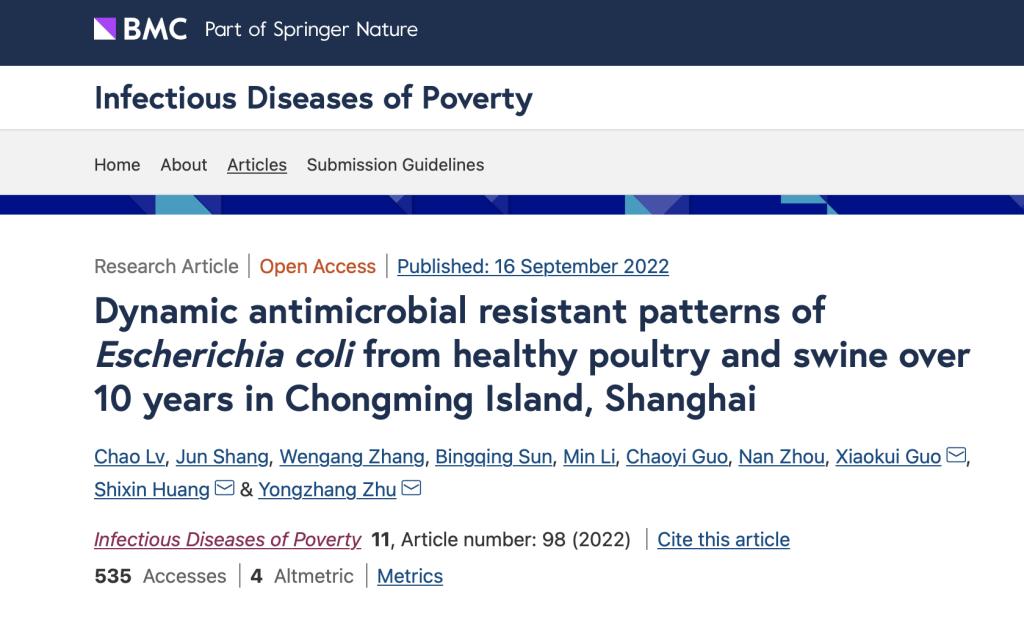
This study uncovered vastly distinct AMR patterns and dynamic tendencies of poultry and swine E. coli isolates from Chongming. Meanwhile, Chongming’s AMR status has ameliorated, as indicated by the decline in antimicrobials prevalence (particularly in swine), lower likelihood of MDR emergence and low carbapenem-, cephalosporin-, and polymyxin resistance. Importantly, this surveillance results are the vital basis for future policy development in Chongming and Shanghai.
Abstract
Background
Antimicrobial resistance (AMR) is one of the greatest threats to animal and public health. Here, we conducted a dynamic surveillance of Escherichia coli on Chongming Island in Shanghai during 2009–2021 to identify the characteristics and trends of Chongming’s AMR pandemic.
Methods
Rectal (cloaca) swabs from four poultry and nine swine farms (Chongming Island, 2009–2021) were collected for E. coli strains acquisition. The micro-broth dilution method was used to test antimicrobial susceptibility of E. coli isolates against 10 antimicrobial classes including 15 antimicrobials. Utilizing generalized linear mixed models (GLMMs) and co-occurrence analyses, we further explored the multiple-drug-resistance (MDR) combinations and dynamic patterns of E. coli over 10 years in two food animals.
Results
Total of 863 MDR isolates were found among 945 collected E. coli isolates, 337 from poultry and 608 from swine. Both isolates exhibited high resistant rates (> 70%) to tetracyclines, phenicols, sulfonamides, penicillins, and aminoglycosides (only in swine). The resistant rates of swine isolates to penicillins, aminoglycosides, tetracyclines, phenicols, and polymyxins were significantly higher than those of poultry isolates, whereas resistance to fluoroquinolones was reversed. Resistance to polymyxins decreased similarly in swine (42.4% in 2009 to 0.0% in 2021) and poultry isolates (from 16.5% to 0.0%). However, resistance to other seven antimicrobial classes (excluding carbapenems and penicillins) declined dramatically in swine isolates, particularly fluoroquinolones (from 80.5% to 14.4%), and tendencies of resistance to the seven classes showed markedly divergent patterns in poultry isolates. Using Poisson GLMMs, the AMR carriage since 2016 was significantly lower than that of 2009 (odds ratio < 1), indicating a decline in the risk of MDR emergence. Furthermore, despite the highly diverse MDR profiles, co-occurrence analysis identified two prominent MDR clusters of penicillins-phenicols-fluoroquinolones in poultry and aminoglycosides-tetracyclines-sulfonamides-phenicols in swine.
Link:https://idpjournal.biomedcentral.com/articles/10.1186/s40249-022-01025-4





